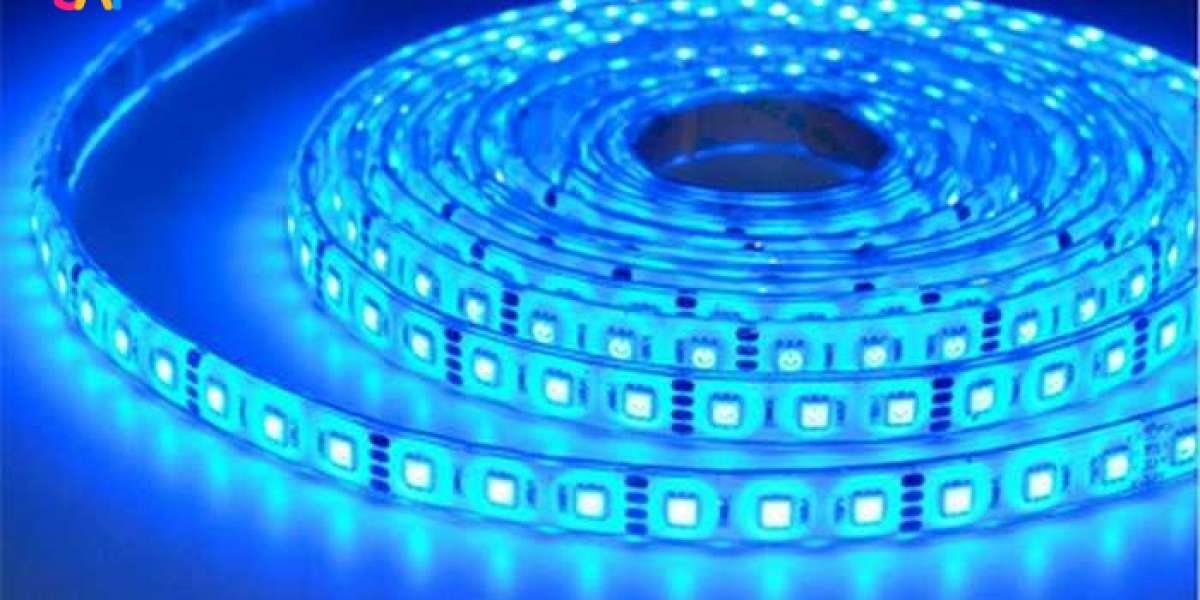With the increasing use of LED lights in our everyday lives, concerns about their potential harm to our eye health and sleep patterns have surfaced. The toxicity of blue light emitted by LEDs has been the subject of numerous studies. To help alleviate any worries, we have compiled a simple
LED lighting can be found in both screens and bulbs. According to the Environment, Health Safety division of Berkeley Lab, LEDs are "a semiconductor assembly that emits light when an electrical current is passed through it." These lights emit high-intensity optical radiation across various spectrums, including ultraviolet, visible, and infrared.
LED lights have become increasingly popular due to their improved performance and energy efficiency. They are used in a wide range of applications, from lighting up our homes and streets to illuminating our favorite stores and personal devices.
The Dangers of Blue Light from LEDs
The issue lies in the intensity of LED light and our constant exposure to it throughout the day. Our reliance on screens, such as computers, TVs, tablets, and smartphones, has only increased. This prolonged exposure, coupled with the intensity of blue light emitted by LEDs, poses potential risks to our eye health and overall well-being.
Blue light is known to emit the shortest and most intense wavelengths of visible light, making it the most harmful. The average American spends more than six hours a day in front of screens, which can lead to visual problems, age-related macular degeneration, headaches, and digital fatigue.
While not all risks of blue light have been fully proven or realized, experts highlight the adverse effects of blue light on melatonin secretion, which disrupts our sleep patterns, as well as its impact on the retina and brain.
Protecting Yourself from Blue Light Emitted by LEDs
To minimize the potential risks associated with blue light, there are several steps you can take:
1. Reduce Screen Exposure at Night
Turn off electronic devices at least an hour before bedtime, especially in the case of children whose eyes are still developing. Staying hydrated by drinking water before bed can also contribute to better sleep.
2. Take Regular Breaks from Screens
For every hour or two spent in front of a screen, take breaks and engage in activities that involve looking at objects in the distance. Applying the 20/20/20 method (looking at something 20 feet away for 20 seconds every 20 minutes) can help reduce eye strain.
3. Use Blue Light Blocking Solutions
Consider using blue light blocking apps or glasses to reduce your exposure to blue light. Glasses specifically designed to filter out harmful blue light can be an effective solution. When choosing blue light blocking glasses, ensure they have a filtration rate between 380 and 450 nanometers.
4. Opt for LED Bulbs with Lower Color Temperatures
LED bulbs labeled as "warm light" have a color temperature below 3,000 kilowatts and emit less blue light. This can help decrease the potential for sleep disturbances.
5. Be Mindful of Blue Light in Toys
When selecting toys for children, pay attention to those that emit blue light. Limiting screen time and choosing toys without excessive lighting features can help protect their eye and regular health.
FAQs about Blue Light Emitted by LEDs
Are LED light bulbs dangerous?
LED light bulbs themselves are not dangerous and won't cause blindness or immediate harm. However, overexposure to the intense blue light emitted by LEDs can have long-term effects on our sleep patterns and eye health.
What are the dangers of blue light?
Short-term effects of blue light exposure include disrupted sleep patterns and short-term health issues such as digital fatigue and eye irritation. Some studies also suggest a potential link between blue light exposure and age-related macular degeneration.
While LED lights have numerous advantages, it's essential to be aware of the potential risks associated with the blue light they emit. By taking simple precautions, such as reducing screen time, using blue light blocking solutions, and selecting LED bulbs with lower color temperatures, we can protect ourselves and our loved ones from the harmful effects of blue light.
 Balenciaga フーディーブラック コットン シ
By Tyra Moss
Balenciaga フーディーブラック コットン シ
By Tyra Moss The Enigmatic World of Hong Kong Escorts: Unveiling the Fascination
By Adah Fadel
The Enigmatic World of Hong Kong Escorts: Unveiling the Fascination
By Adah FadelDiscover the Perfect Scam Verification Platform with Casino79 for Your Toto Site Experience
 Top Models & Companionship in Dubai
By Ann Bugatti
Top Models & Companionship in Dubai
By Ann Bugatti Prepare For The Pleasure With Bahrain Escort Services
By Ann Bugatti
Prepare For The Pleasure With Bahrain Escort Services
By Ann Bugatti